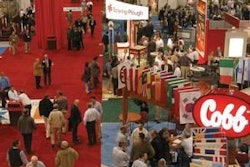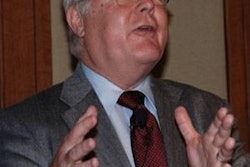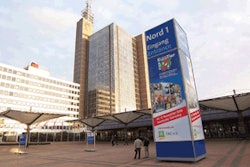In the near-term, the demagoguery by Russian political leaders and the less-than-transparent governmental process mean unpredictability for U.S. exporters. Longer-term, a growing national poultry production industry and Russian self-interest presage a decline in exports into the country.
According to reports by the Russian Federal Customs Service (FTS), in the first seven months of 2006 compared to the same period last year, poultry imports dropped to 691,300 tons from 702,600 tons. Due to higher prices, however, the value of imports in the first seven months of 2006 totaled $467 million, up from $441.1 million a year earlier.
USDA Foreign Agricultural Service (FAS) reports that wholesale poultry prices decreased year-on-year basis in August 2006 for both domestic and imported product, down 3 percent for domestic frozen breasts to almost 30 percent on imported frozen carcasses. “After the Russian Federation took counter measures, prices started rising in May 2006 before once again going down in August. Recently, domestic producers have been competing more and more with each other instead of with their traditional adversaries, poultry importers,” FAS reported.
Russian producers are making gains in their productive capacity, FAS reports. Meat and poultry production increased 3.9 percent to 3.7 million metric tons from January to July 2006, in comparison with the same period in 2005. Production in 2006 is expected to increase 20 percent, and forecasts show it growing 18 percent in 2007. Turkey production is also growing as new turkey facilities are being constructed.
A new system of poultry production has been introduced in some regions of the Russian Federation, and the Ministry of Agriculture has plans to apply this approach throughout the country. FAS reports that the mini-poultry facility, equipped with the latest European equipment, is being constructed in Uliyanovsk oblast. One person services the mini-farm, which is automated and computerized from climate support to manure removal. It is expected to produce about 700 metric tons of poultry meat annually. The production program calls for broilers to be slaughtered at 42 days of age at an average weight of 2.5 kilograms. The expected weight gain is 60 grams per day. Twenty-five sets of the mini-farms are to be built in the region.
According to FAS reports, transnational company Ideal Poultry House (IPH) plans to invest 875 million rubles to build a large poultry facility in Uliyanovsk oblast. Ideal Poultry House was founded in Belgium with shareholders from Hungary, Belgium, Denmark, Holland, Luxemburg and France. The Belgian Fortee Bank will finance the project.
German company Lomann Tierzucht GMBH that supplied one-day-old chicks for many Ural region poultry farms now refuses to cooperate with state-owned farms, according to FAS. The company lost 8.8 million rubles after its joint venture with a state-owned Russian partner fell apart after the Russian partner filed for bankruptcy. The company stated that it will only do business with private companies in the future.
FAS also reports that Eurodon Company is building turkey farm operations in Rostov-on-Don (Lower Volga region). Approximately 63,000 metric tons of turkey meat will be produced and processed there. An Israeli company, M.A.D. Developing Agricultural Projects Limited, will provide the technology for production and processing.
Russian consumers are not accustomed to eating turkey meat, since there was no domestic production until recently. Companies have begun raising turkeys and advertising the product heavily to attract customers. As a result, turkey meat prices are high (250 rubles/kg of turkey breast vs. 130 rubles/kilo of broiler breast) compared to chicken prices.
Meantime, Russian producers continue to demand that their government limit competition by applying import restrictions. The Russian Poultry Union organized a rally in Moscow this past summer demanding that protective measures be enacted by the government. It prepared an open letter to Russian President Putin that was signed at the rally and later published in Russian newspapers.


















